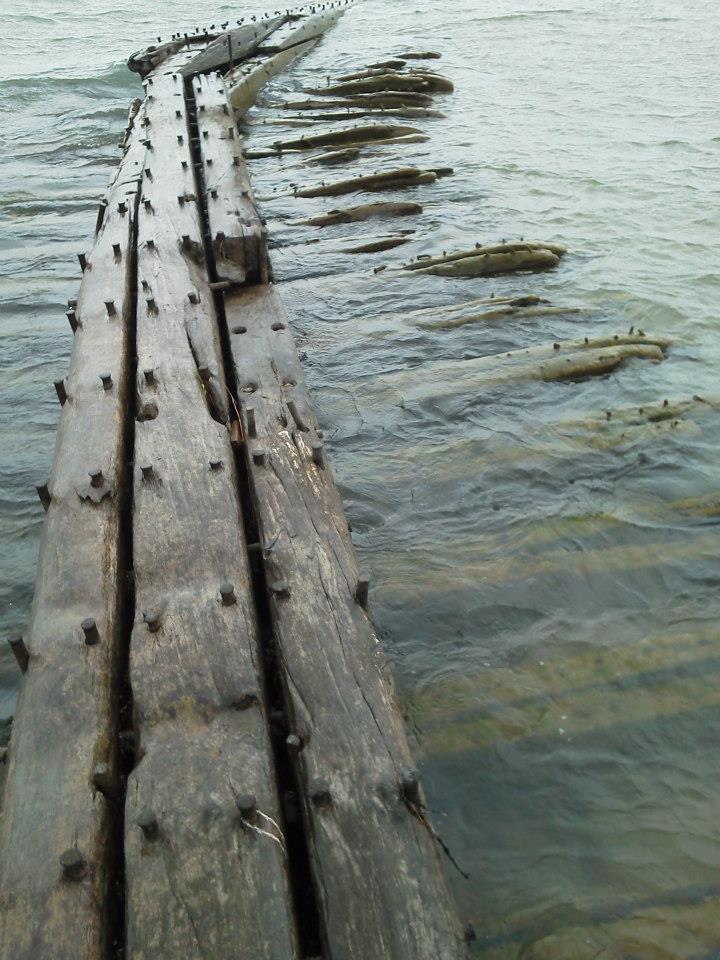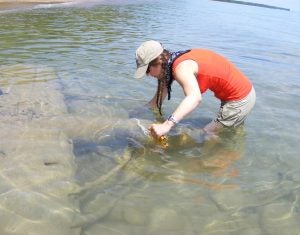Relatively recently in the history of the Great Lakes Range at UM, interest in the Lake Huron region has expanded into the historic era, with the development of expertise in coastal and underwater archaeology, with a particular focus on Nineteenth Century shipwrecks. While the historical documentation and identification of shipwrecks is a useful undertaking in its own right, our research is more concerned with the ‘ecology of wrecks’, particularly the relationship of shore morphology and weather conditions to the management and occasional loss of sailing vessels, and on the depositional and post-depositional processes that act on wooden vessels once they are lost. The goal of this research is to create a firmer theoretical basis for the understanding of marine archaeological deposits generally.
One of the benefits for archaeologists working on sites from the historic era is the potential of linking the discovered materials with the rich data that can be obtained from written sources. This is particularly true for the archaeological study of shipwrecks, where a vessel identification may provide immediate links to construction plans of the vessel, the names of the captain and crew, the manifest of cargo, and the often sad and harrowing tale of the vessel’s loss. Historical records can also play a critical role in locating and identifying the wreck site, by providing descriptions of the vessel and the place, time, and conditions of loss.


Archaeological survey on the western shore of Lake Huron chronicles the lost vessels and the cause of their wrecking and considers how the shore itself has changed over the last 150 years and how these changes may affect where historic shipwrecks will be found. See our Publication pages for more information.

